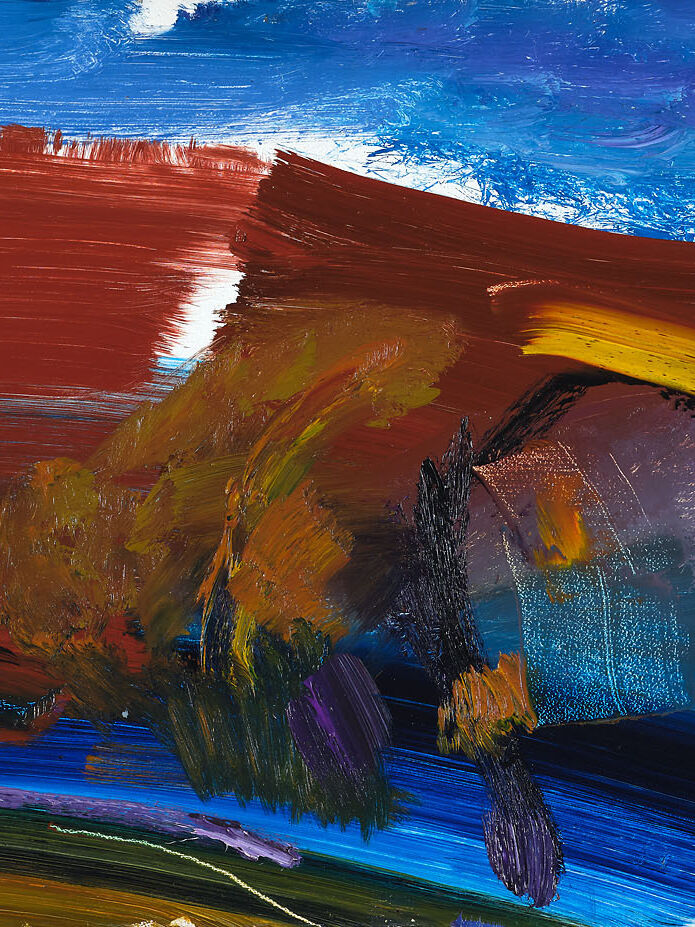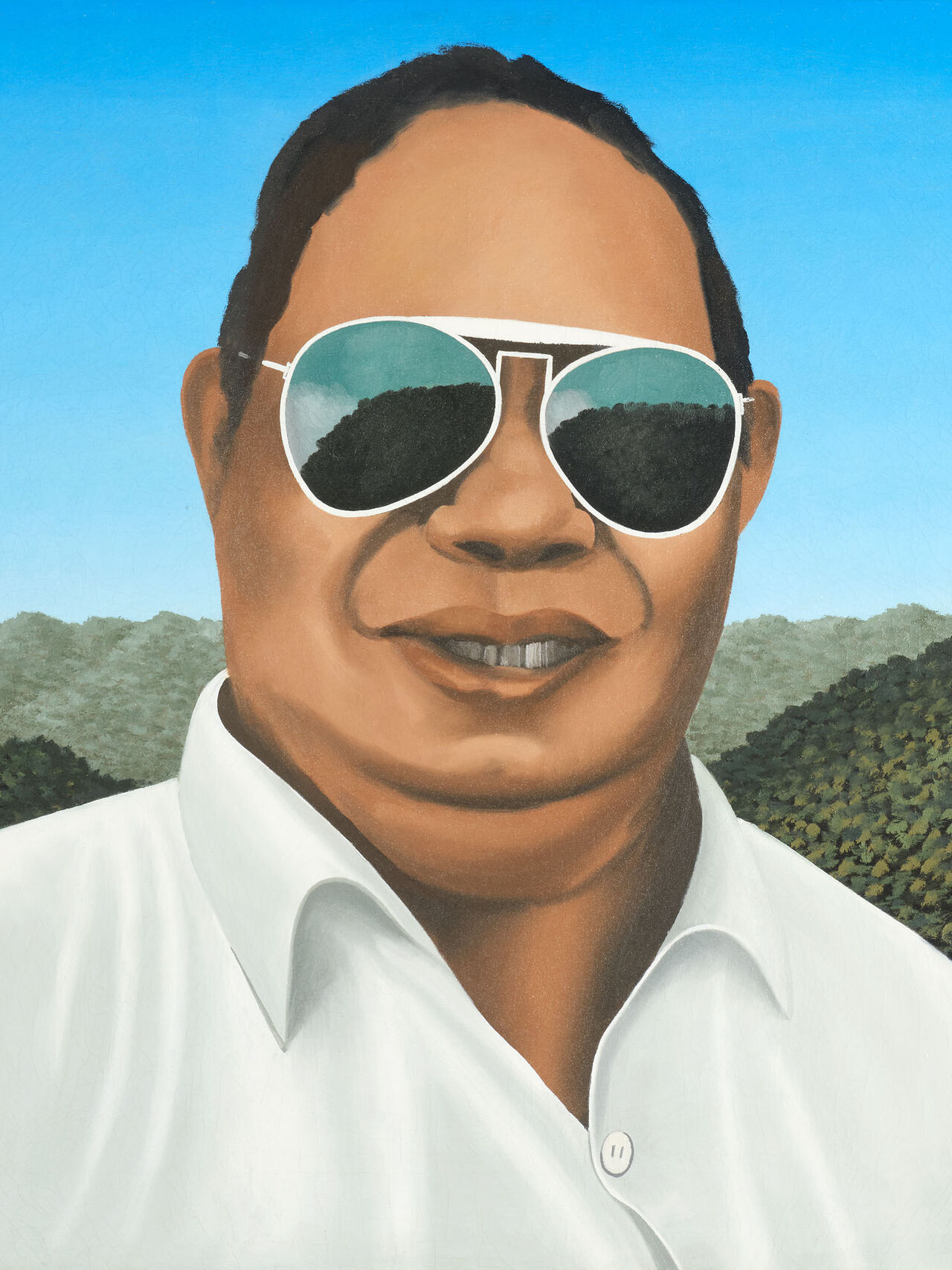Beyond Patronage: Ian Scott's lifelong friendship with the Gellert's
Chris Corson-Scott
Essays
Posted on 28 May 2025
In 1972, after two years teaching art at Nelson Boys college, my father, Ian Scott, moved back to Tāmaki Makaurau, Auckland. That year the Petar/James gallery opened in the CBD, and a few floors up in the same building, John Gellert had begun working as a solicitor. In part through this happenstance, John became a regular visitor to the gallery. In 1973 my father had the first of several exhibitions there, and he and John met, eventually becoming friends.
Although the Petar/James Gallery survived for barely a decade, it had an outsized influence on art in this country. Along with the vision of its artists, its founder Petar Vuletic had an uncompromising belief that local art needed to move beyond regionalism, into the new international languages of colour-field painting, and minimalism. At that time, this kind of art had bite, and edge, and it was hugely challenging to both conservative, and mainstream taste. Even as late as 1978, when my father won the national art award, people would still sometimes unashamedly tell him, “Their kid could do a Lattice”. Against this parochial context, John became a regular buyer from the Petar/James Gallery, and his early support was important and unique. Gallery director Petar Vuletic reflected that at that time John had, “a very rare interest and curiosity about what he saw.”(1)
In 1978, my father met my mother, Nan Corson. Not long afterwards, she met John and Sheana. “I remember very clearly Sheana’s dazzling warm smile, and John’s enthusiasm and respect for Ian’s work. I knew they were special people in his world, and soon they became special in mine too. The beginning of a life-long friendship.”(2)
Throughout the 1980s, John and Sheana continued to collect art intensely, to the point they were running out of space. A problem compounded by the fact that many of the artists they supported – especially my father – were now working at a scale previously unseen in this country. In 1989, John co-founded Gellert-Ivanson lawyers on Tāmaki Drive in Kohimarama, and with a new ‘gallery’ to fill, their collecting began afresh. John wrote in 1993, “Although clients may not at first appreciate the work, it is noticeable that after several visits many of the clients make positive comments about it.”(3) His comment shows that he saw his law office collection not as background decoration, but as an educational semi-public gallery.
By 1987, my father felt most of what could be explored with abstraction had been. He was then at the height of work on The Lattices (of which John and Sheana own No. 1, a work you might assume would be in a public gallery), but he made a dramatic change in his work anyway. Turning away from abstraction, he began making work which meditated on landscape, text, literary refence, and regionalism. The move was not popular with collectors who had only just accepted ‘The Lattice’ series, and even as a five-year-old, I could see the stress this sudden withering of support had on my father, and our family.

John and Sheana were among the very few collectors whose support remained as my father tried to grow and change in his work. They knew exactly what they were doing, and the position they were taking. In 1993, John wrote in a foreword for an exhibition catalogue, “Unlike many artists Scott has not been satisfied with continuing to paint the work which is most ‘popular’ and for which he is best known.”(4)
Recognising the difficulty of this period, and seeing that my father needed a break, from the early 1990s, John and Sheana began letting us stay at their old beachfront caravan at Whangapoua in Coromandel. Today, these seafront properties are crowded with multimillion-dollar mansions, but then it was a remote beach community with just one street of houses, flanked by an affordable campground. For John’s entire life he held out on building a house there. He preferred the honesty and simplicity of the old caravan and outhouse, (and later, a tiny bunkhouse for his kids.)

Ian Scott’s Portrait of Sheana Gellert in the stairwell of Sheana’s Ōrākei home.
Even after John’s death, (and my father’s, a decade later), Sheana continued to let us use the property, which by then was a modest beach house, in which several of my father’s small Lattices and watercolours hung on the walls. For his entire life, my father loved painting landscapes, and at Whangapoua it was like he was free from the normal pressure of being an artist. Each day he would walk kilometres over the hills, around the coastline, and harbours, painting watercolours. As a kid it wasn’t easy to keep up, but looking back, it’s clear the overgrown concrete ruins of Whangapoua’s 19th century sawmill, and the then magic wildness of the place was a huge influence on my own art now. Memories of climbing through wild blackberry on the headland’s ancient Pā, and swimming between the breakers in rockpools off the cost in clear summer light, are forever etched in my mind.
My father was a shy person, and he hated public speaking. His respect for John was such though, that at John’s funeral he gave a lengthy eulogy, which he ended simply with, ‘John was one of the good ones.’ By this point John and Sheana’s house was well and truly full of art, and they had mostly stopped collecting. Even so, she continued to come to openings, offering warm support, and her friendly biting sense of humour. As a couple, they exemplified what supporting artists could look like.


